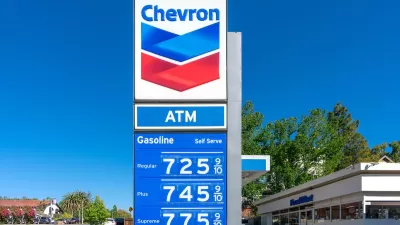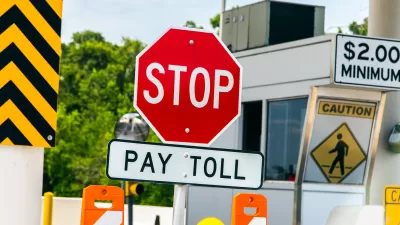I often hear debates over the costs of different modes of transportation, particularly between driving and public transit travel. Rising fuel prices have made public transit more attractive for some trips, boosting ridership, but critics point out that for most trips, transit fares are still comparable with fuel costs (for example, at $4 a gallon, fuel costs about $2 for a typical 10-mile trip, comparable to a bus fare in a typical city), and generally take longer. It is therefore legitimate to ask whether public transit really saves money.
I often hear debates over the costs of different modes of transportation, particularly between driving and public transit travel. Rising fuel prices have made public transit more attractive for some trips, boosting ridership, but critics point out that for most trips, transit fares are still comparable with fuel costs (for example, at $4 a gallon, fuel costs about $2 for a typical 10-mile trip, comparable to a bus fare in a typical city), and generally take longer. It is therefore legitimate to ask whether public transit really saves money.
The correct answer is "it depends." Although fuel costs are generally about equal to bus fares for a typical 10-mile trip, vehicle operation also imposes "mileage based depreciation costs" (vehicle wear-and-tear, including tire replacement costs, additional maintenance and repairs, and reduced resale value), so there are modest vehicle cost savings overall. For example, a 10-mile trip typically costs about $4 in total vehicle operating costs, which is more than typical bus fares. If the vehicle is fuel inefficient, or the trip requires tolls or paid parking at the destination, then financial savings are much greater, often totalling several dollars each day a commuter shifts to public transit. If commuting by public transit allows a household to reduce its vehicle ownership (for example, to get by with one rather than two cars), the savings are much larger, typically totalling a few thousand dollars annually.
To put this into perspective, if a typical household shifts from driving everywhere (what we call, automobile dependency) to multi-modalism (using a combination of travel modes) and so is able shed one vehicle, the savings typically average about $5,000 annually. If these savings were invested each year over a typical 45 year working career, the household will retire about a million dollars wealthier. In the case of my own households, transportation cost savings are financing our son's tuition to an elete university.
Yes, it is true that for many trips, automobile travel takes less time and is more flexible than public transit. However, the travel time cost analysis is somewhat more complex, as discussed in the "Travel Time Costs" chapter of my study, Transportation Cost and Benefit Analysis. Unit travel time costs vary significant, with higher costs for driving under congested conditions, higher costs for public transit under uncomfortable conditions, and lower costs for public transit travel under relatively comfortable conditions. As a result, under urban peak conditions, travel on a comfortable transit vehicle (such as a clean and uncrowded bus or train) is often cheaper per minute than driving. In other words, many travelers would prefer to spend 40 minutes traveling on a comfortable bus or train, during which they can rest or read, than 30 minutes fighting traffic and searching for a parking spot. This has important implications, because it suggests that much of the money currently being spent to increase traffic speeds, for example, by widening urban highways, could be better spent on improving public transit travel conditions and therefore unit costs. This is discussed in the article, Valuing Transit Service Quality Improvements (Journal of Public Transportation, Vol. 11, No. 2, Spring 2008, pp. 43-64).
It is also important to consider "effective speed," the total time devoted to travel and paying for transport equipment and services. A typical household spends about 20% of its total expenditures on automobile, so a typical worker is spending about 90 minutes a day driving and another 90 minutes a day working to earn money to pay for their vehicle, so the effective speed is about half the perceived average driving speed. If shifting to public transit allows a household to reduce its vehicle ownership, the financial savings and effective travel time savings can be substantial.
Is transit cost effective from society's perspective? Virtually all forms of motorized transportation rely on various subsidies (roads and services funded through general taxes, parking facilities financed through general taxes and incorporated into development costs and therefore building rents, accident risk imposed on other road users, and pollution emissions). Compared with the full costs of accommodating additional urban-peak automobile trips, accommodating the same trips by public transit is often much cheaper overall, but conventional project evaluation only considers a portion of total costs. For example, when comparing transit and highway investments, transportation agencies generally ignore the parking cost savings that result when travelers shift from automobile to public transit. Similarly, conventional economic evaluation ignores the household cost saving that result when public transit improvements allow household to reduce their vehicle ownership.
Although it is not optimal to shift all travel from automobile to public transit, for many trips it is cost effective, particularly when all costs are considered.
For more information see:
"Transportation Cost and Benefit Analysis" (http://www.vtpi.org/tca),
"Evaluating Public Transit Benefits and Costs" (www.vtpi.org/tranben.pdf).
"Smart Congestion Reductions II: Reevaluating The Role Of Public Transit For Improving Urban Transportation" (www.vtpi.org/cong_reliefII.pdf).

Alabama: Trump Terminates Settlements for Black Communities Harmed By Raw Sewage
Trump deemed the landmark civil rights agreement “illegal DEI and environmental justice policy.”

Planetizen Federal Action Tracker
A weekly monitor of how Trump’s orders and actions are impacting planners and planning in America.

The 120 Year Old Tiny Home Villages That Sheltered San Francisco’s Earthquake Refugees
More than a century ago, San Francisco mobilized to house thousands of residents displaced by the 1906 earthquake. Could their strategy offer a model for the present?

In Both Crashes and Crime, Public Transportation is Far Safer than Driving
Contrary to popular assumptions, public transportation has far lower crash and crime rates than automobile travel. For safer communities, improve and encourage transit travel.

Report: Zoning Reforms Should Complement Nashville’s Ambitious Transit Plan
Without reform, restrictive zoning codes will limit the impact of the city’s planned transit expansion and could exclude some of the residents who depend on transit the most.

Judge Orders Release of Frozen IRA, IIJA Funding
The decision is a victory for environmental groups who charged that freezing funds for critical infrastructure and disaster response programs caused “real and irreparable harm” to communities.
Urban Design for Planners 1: Software Tools
This six-course series explores essential urban design concepts using open source software and equips planners with the tools they need to participate fully in the urban design process.
Planning for Universal Design
Learn the tools for implementing Universal Design in planning regulations.
Clanton & Associates, Inc.
Jessamine County Fiscal Court
Institute for Housing and Urban Development Studies (IHS)
City of Grandview
Harvard GSD Executive Education
Toledo-Lucas County Plan Commissions
Salt Lake City
NYU Wagner Graduate School of Public Service





























